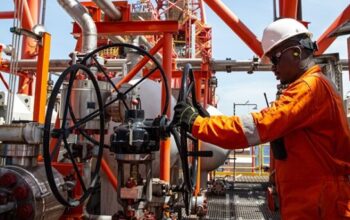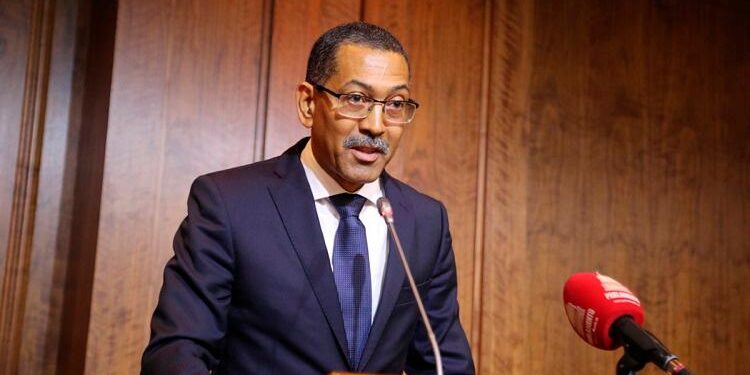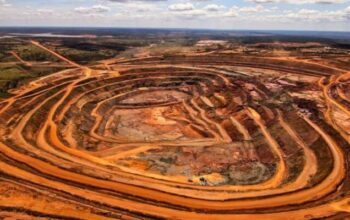Angola confirms having commercial reserves of 36 critical minerals
The consultant to the Minister of Mineral Resources, Petroleum, and Gas, Mankenda Ambroise, stated on Tuesday in Luanda that out of the 51 minerals considered the most critical worldwide, 36 are known in Angola and ready to enter production.
Recent research has revealed that the national territory is endowed with extraordinary geological potential. Mankenda Ambroise, who delivered the opening speech at the 2nd edition of the “Mining Business Forum,” emphasized that in addition to the critical minerals that will enter production in the future, the government continues to work on local and regional geological mining research to expand knowledge of areas with mining potential and create conditions for the development of projects with new investments.
Mankenda Ambroise stressed that the ongoing work involves the private sector and aims to develop existing mining projects at the provincial level in the country, providing business opportunities for the next five years.
According to Mankenda Ambroise, this advancement is highly beneficial for the sector because Angola possesses considerable mineral potential for clean energy technologies, including chromium, cobalt, copper, graphite, and other strategic minerals.
The Angolan government also has other major projections in the energy sector, where the “Mining Transition” growth is being planned, which brings opportunities through critical minerals for sectors that interact with the Angolan extractive industry.
Mankenda Ambroise acknowledged that there is still a long way to go, but the government aims to diversify mining production, including critical minerals, in order to play a fundamental role in socioeconomic development, public interests, and social welfare. He highlighted minerals such as iron, lead, lithium, manganese, neodymium, praseodymium, nickel, silver, titanium, and zinc, all of which are part of different value chains in mining development.
“With a stable investment environment, a strong regulatory model, and good governance in the mining sector to attract credible investors, among other laws and benefits, everything has been done to gain the trust and investment of credible investors in the Angolan market,” he emphasized. He also highlighted that the “Mining Business Forum” is taking place at a time when the government is strongly focusing on the sector.
Production initiatives
Regarding new explorations, Mankenda Ambroise announced the imminent start of production of neodymium and praseodymium, critical minerals in Angola.
According to the consultant, current efforts and special attention are focused on the development and diversification of projects in the mining sector, with the aim of attracting potential investors for large-scale exploration of critical minerals, aligning with the “African Mining Vision 2063.”
“Africa, in general, and Angola, in particular, are potentially rich in critical minerals and could provide a solid basis for the development of specific mining projects to seize business opportunities emerging from the energy transition,” emphasized Mankenda Ambroise. He stressed the urgency and need to make enormous efforts to ensure a fair and sustainable energy transition because the entire world is moving towards decarbonization, aiming to eliminate greenhouse gas emissions by 2050.
“Today, the world speaks of minerals for the energy transition, and Angola is one of the countries where there is a geological environment conducive to promoting and developing projects involving these types of minerals to meet future demands,” defended Mankenda Ambroise. He highlighted that, in the process of global decarbonization, all attention is focused on the African continent, where the population is rapidly growing, and strategic minerals are present to successfully accomplish the energy transition.
Memorandum of Understanding
The signing of the memorandum of understanding between the Angola-Canada International Chamber of Commerce and the national company specialized in promoting mining potential, Bumbar Mining, was one of the most relevant moments on the first day of the second edition of the Mining Business Forum, taking place in Luanda under the theme “Challenges of Mining Transition.”
The protocol, signed by the president of the mentioned chamber, Adriano Campos, and the general director of Bumbar Mining, Sebastião Panzo, establishes a partnership based on technical and administrative mechanisms to attract a greater number of Canadian investments to Angola in the field of critical minerals and the exchange of experiences in energy transition.
Comprised of legal entities and individuals, the chamber has been dedicated to its specific mission of bringing entities from both countries closer together, but the memorandum defines specific responsibilities that Bumbar Mining brings to this relationship, according to Sebastião Panzo.
“Our responsibilities are related to the expertise of bringing together Angolan companies, studying with them, and providing the necessary technical support to solidify the relationship between Canadians and Angolans through training and organizing local forums involving Canadian entities to empower potential investors,” he said.
Sebastião Panzo concluded that Canada makes significant investments in the global mining sector, but there are specific criteria for that. “Therefore, our goal is to equip Angolan companies with this knowledge, providing contributions based on the experience that Bumbar Mining has accumulated.”
Challenges of the energy transition
The annual demand for critical minerals, used in clean energy technologies, is projected to exceed 400 billion dollars by 2050, equivalent to the current annual revenues of the global coal market, according to José Bisarro, a partner at PwC Portugal, Angola, and Cape Verde.
José Bisarro discussed the topic “Current Trends in Energy Transition” at the 2nd edition of the “Mining Business Forum,” stating that the rapid implementation of clean technologies as part of the energy transition will lead to a significant increase in mineral demand.
Regarding critical minerals, José Bisarro argues that they are needed at all stages of the low-carbon energy cycle. Those directly related to the energy transition will experience the highest growth and dominate the mining sector.
Regarding miners, José Bisarro believes that achieving the “net-zero” goal will require increased mining activity. The rapid progression of low-emission energy systems, such as solar and wind energy, electric vehicles, and grid-scale batteries, will require more intensive use of materials.
Regarding energy sources, José Bisarro predicts that electricity will be the largest source of energy in 2050, doubling its current demand. Renewable and nuclear sources, expected to replace fossil fuels, are projected to represent less than 20 percent, down from around 80 percent in 2021.
“Almost 50 percent of African countries have the essential minerals needed for the energy transition, and in the specific case of countries like Angola, South Africa, Nigeria, Algeria, and Libya, they are responsible for producing more than two-thirds of the continent’s mineral wealth,” emphasized José Bisarro.
![]()




